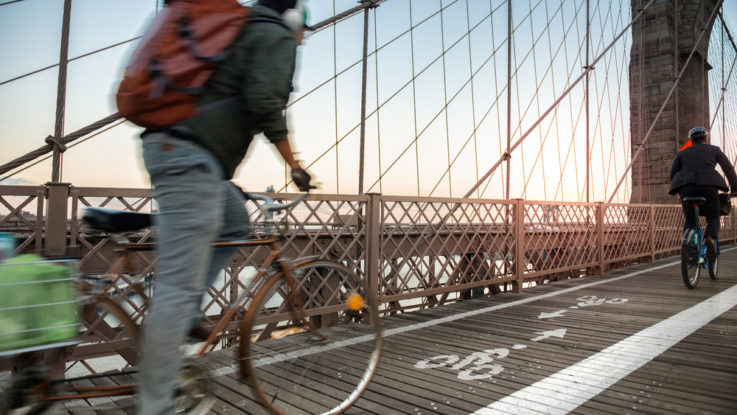
New York City’s Metropolitan Transportation Authority (MTA) is preparing to launch a new plan designed to enhance bicycle, pedestrian and micro mobility options.
Slated to begin later this year, the plan includes:
- improving bicycle, pedestrian, and micro mobility access to subway stations and bus stops;
- improving access at defined train stations;
- integrating trip planning and payment methods with bike-sharing and electric scooter services;
- strengthening coordination with municipalities; and
- improved pedestrian and bicycle access to and on MTA bridges.
“We want to improve customer access to our environmentally friendly MTA services, however they get to their train or bus,” said MTA Chair and CEO Janno Lieber. “As a cyclist myself, I know that biking can be the perfect complement to mass transit. This plan improves access to our services through cycling, walking and micro mobility, and will help bring riders back and reduce our carbon footprint.”
The agency is consulting with Sam Schwartz Engineering in supporting the initiative. The company has been providing On-Call Traffic Engineering services for both New York City Transit and MTA Bus Company for a number of years. The public is invited to submit comments and suggestions for the plan on the MTA webpage.
“As more and more people are walking and cycling to get around – particularly in the face of our growing climate crisis – improving access to the MTA network for bicyclists and pedestrians is more important than ever,” said Lisa Daglian, Executive Director of the Permanent Citizens Advisory Committee to the MTA. “Making it easier to get to and from stations without a car will help increase ridership around the system, while cutting down on congestion and emissions. Improving connectivity by adding missing links to bridges, either by finishing walkways and bike paths or adding bike racks on additional bus routes, will allow more people to get where they’re going under their own power or take transit.”